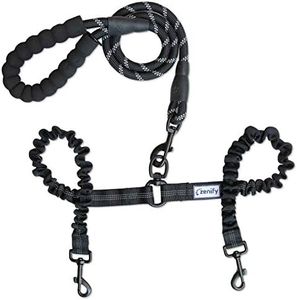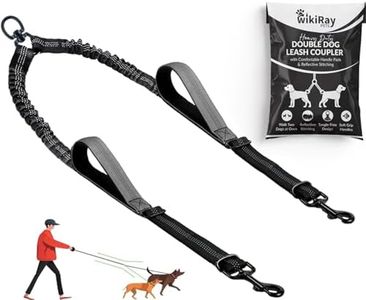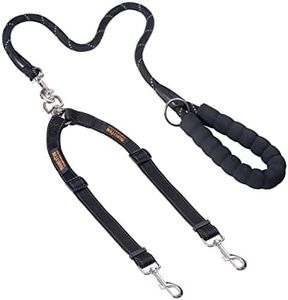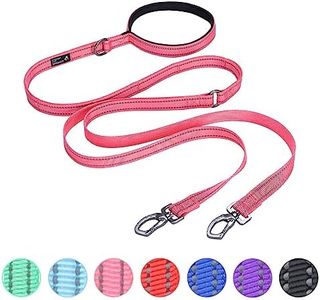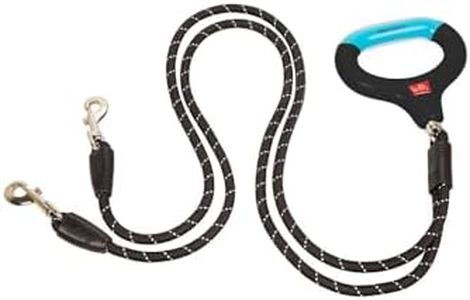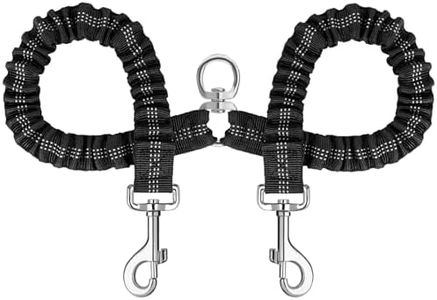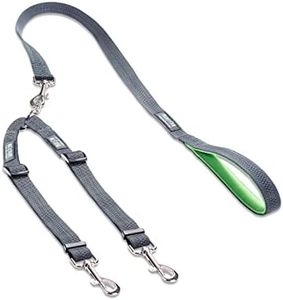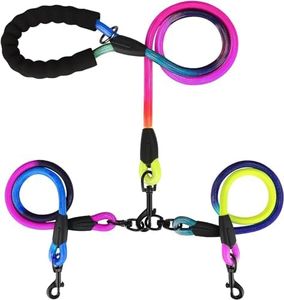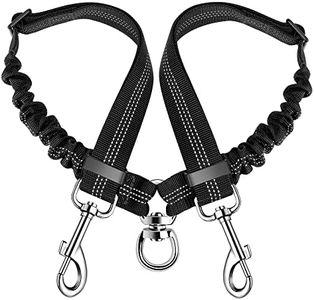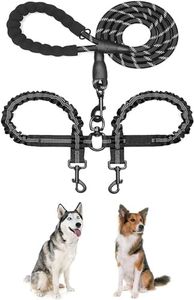We Use CookiesWe use cookies to enhance the security, performance,
functionality and for analytical and promotional activities. By continuing to browse this site you
are agreeing to our privacy policy
10 Best Double Dog Leash
From leading brands and best sellers available on the web.Buying Guide for the Best Double Dog Leash
Choosing a double dog leash can make walking two dogs at the same time more manageable and comfortable. This special type of leash is designed to keep your dogs close without the leads getting tangled, making walks enjoyable for both you and your pets. To pick the right double dog leash, you should consider factors such as the type of coupling, adjustability, comfort, and the strength of materials. Knowing the needs of both your dogs—like their size, temperament, and walking habits—will help you find the best fit.Leash MaterialThe material of a double dog leash affects its durability, weight, and comfort. Most common choices are nylon, leather, or rope. Nylon is lightweight and easy to clean, making it practical for most situations; leather is sturdy and often more comfortable to grip for long walks, though it can be heavier; rope offers a blend of strength and flexibility but is sometimes bulkier. If you have strong or large dogs, choose a thicker, heavier material to prevent breakage. For small dogs or shorter walks, lighter materials may be more comfortable.
Coupler DesignThe coupler is the part that splits into separate leads for each dog. Some couplers are fixed in length while others are adjustable, allowing you to set how far apart your dogs can be. Adjustable couplers are helpful if your dogs are different sizes or have different walking paces. A good coupler can also help to prevent the leads from tangling by using a swivel mechanism. If your dogs walk well together, a simple fixed coupler may be enough, but if they move differently, consider an adjustable one with a swivel.
LengthLeash length influences how much freedom your dogs have to move. Shorter leashes (under 3 feet each) keep the dogs close to you and each other, which is great for training or crowded areas. Medium lengths (3-5 feet each) give some room for movement while still keeping control. Longer lengths (over 5 feet each) allow for more exploration, but may make handling two dogs harder. Assess where you'll be walking (busy sidewalks vs open parks) and how well your dogs behave on the leash when choosing the right length.
Handle ComfortThe handle is where you hold the leash, and its design can affect your comfort on long walks. Look for padded or ergonomically shaped handles to reduce strain on your hands. If you typically walk for long periods or your dogs are strong pullers, a comfortable handle becomes more important. Try to choose one that feels good in your hand and doesn’t chafe or dig in.
Tangle-Free FeaturesTangle-free designs use swivel mechanisms either at the base or where the coupler splits, allowing each dog to move independently without twisting the leads. This is especially helpful for active or playful dogs who tend to cross paths. If tangling has been an issue on your walks, prioritize a double leash with a reliable tangle-free mechanism for easier outings.
Clip Strength and SecurityEach end of the leash attaches to your dogs’ collars or harnesses using metal clips. These clips need to be strong and secure, especially for large or energetic dogs, to prevent accidental escapes. Look for clips made from sturdy materials like steel, and test that they open and close smoothly. If your dogs are small, lighter clips may be enough, but for bigger breeds, only choose heavy-duty clips.
